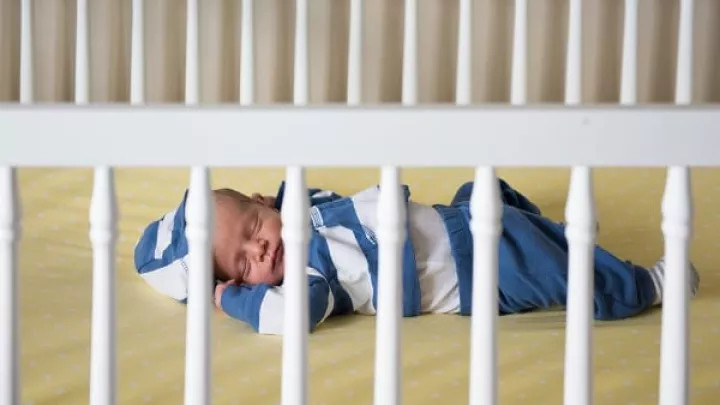
Swaddling Do’s and Don’ts
Swaddling is a technique that mimics the coziness of the womb. Parent learns this special way of providing comfort for their newborn, but is it safe? If so, is there a wrong and a right way to swaddle?
The American Academy of Pediatrics (AAP) says that when done correctly, swaddling can be an effective technique to help calm infants and promote sleep. Swaddling also helps with providing security for your baby and assists when babies feel overstimulated. One of the best arguments in favor of swaddling is that it has been proven to reduce the risk of sudden infant death syndrome (SIDS) specifically when following the "Safe to Sleep" guidelines that were first launched in 1992.Studies have shown that babies who sleep swaddled on their backs have about 33 percent less chance of SIDS than unwrapped back-sleeping babies!
Working in the Newborn and Infant Critical Care Unit at Children’s Hospital Los Angeles, pain is a huge concern not only for the babies, but the parents and the entire NICCU staff. Studies have shown that swaddling improves bonding, feeding and encourages a sense of security for the babies, as well as reduces pain.
“In my experience, infants that are swaddled appropriately receive less pain and sedation medication,” says Brenda Gallardo, RN lead nurse in the NICCU at CHLA.
"Parents should learn about safe swaddling at well visits with their pediatrician as part of a conversation about healthy sleep habits such as always putting babies to sleep on their backs,” says Philippe S. Friedlich, MD, MBA, MS Epi, interim director & division chief, Center for Fetal and Neonatal Medicine at CHLA.
Katy Peck, speech and language pathologist who works for the Division of Pediatric Rehabilitation Medicine at CHLA, explains as someone who specializes in infant feeding, swaddling provides central containment: "This is used to promote neurobehavioral regulation and minimize energy expenditure during bottle feeding.We use this as a technique to facilitate midline placement of extremities and support to the bodies core region (trunk) so that the infant can focus on feeding.Without an adequate swaddle, infants may become disorganized and utilize valuable energy necessary for coordinated feeding.The infant will begin to focus on fighting gravity in attempts to optimize positioning and regulate from a sensorimotor perspective."
A step by step demonstration of the correct way to swaddle

- To swaddle, spread the blanket out flat, with one corner folded down.
- Lay the baby face-up on the blanket, with her head above the folded corner.
- Straighten her left arm, and wrap the left corner of the blanket over her body and tuck it between her right arm and the right side of her body.
- Then tuck the right arm down, and fold the right corner of the blanket over her body and under her left side.
- Fold or twist the bottom of the blanket loosely and tuck it under one side of the baby.
- Make sure her hips can move and that the blanket is not too tight. “You want to be able to get at least two or three fingers between the baby’s chest and the swaddle
Do’s:
- Follow the "Safe to Sleep” guidelines. All babies should be placed on their backs when they are sleeping to promote reducing the risk of SIDS.
- Babies should be monitored to assure they don’t roll over. It is recommended to continue to swaddle up until 2-3 months so they don’t accidently roll over. Monitor your baby’s cues.
- Monitor your baby’s arousal state. Babies who are swaddled tend to sleep longer but decreased arousal can mean there can be a problem (explain and site)
Don’t’s
- Never place a swaddled baby on their stomachs.
- Don’t swaddle your baby too tightly. Babies who are swaddled too tightly may develope problems with their hips. The Pediatric Orthopaedic Society of North America and the AAP Section on Orthopaedics, promotes “hip-healthy swaddling” that allows the baby’s legs to bend up and out.
- Do not leave loose blankets in the baby’s bed.
- Don’t cover your baby’s face while swaddled to avoid overheating and suffocation.
Sources: HealthyChildren.org and the American Association of Pediatrics


